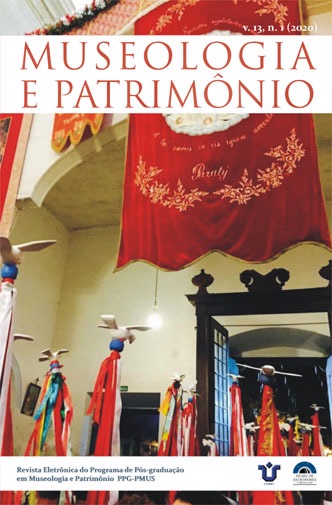Sacred and art: Portuguese and Brazilian religious art in museum collections
Keywords:
Arte religiosa, Museologia da religião, Patrimônio cultural.Abstract
Museology intersects with the religious phenomenon, in the sense that museums expose objects linked to the sacred and related to worship and devotion. In the Western world and, in particular, in Europe, the connection to Christianity underlies the history of museology, from the paramuseological activities of medieval ecclesiastical treasures to the creation of the first museums with collections constituted by assets proceeding from the secular and regular Church. Also, Christianity frames much of Western culture and art, in the sense that much of the artistic production, especially until the end of the 18th century, results from ecclesiastical commissions or relates to subjects of a Christian matrix. One of the crucial moments in the history of religious art coincides with the mutual influence of religious art in Portugal and Brazil in the Baroque context, reflecting on the intercultural dynamics of popular religiosity and the manifestations of its external cult. Therefore, the description of the concept of sacred within the scope of Christianity appears crucial to the understanding of the particular circumstances surrounding the exhibition of this heritage in the museum. The transformation of the religious object into a museum, linked to the transfer to the profane space of the museum, implies the loss of the original function, understood semiologically as a sign-function. Decontextualization and change of meaning are, therefore, inherent to the musealization process, during which the religious object tends to be evaluated as a work of art, obliterating the remaining attributes and meanings. In the first museums, the public, familiar with devotional practices in their daily lives, recognized the meaning and function of the religious collection on display. However, the progressive secularization of society and the abandonment of Catholic religious practice given the growing adherence to other rites has been causing ignorance of the original function and the meaning of the objects exposed. Therefore, it is necessary to create mediation and interpretation devices for the exposed objects, according to the museum's expository discourse, without generating an unbearable visual and informative noise in the respective physical space. The interdisciplinary study of collections, crossing the domains of theology, liturgy, anthropology and the history of art and culture, is a basic procedure that supports subsequent projects of recontextualization and recovery of the various semantic components of heritage. Digital humanities, allowing the segmentation of information and its availability in a virtual environment, through non-invasive processes of the materiality of spaces, as well as the possibility of personalizing profiles, plural and eclectic, are configured as an adequate resource for preservation, access, interpretation and communication of religious collections existing in museum spaces.Downloads
Download data is not yet available.
Downloads
Published
2020-01-30
How to Cite
Roque, M. I. (2020). Sacred and art: Portuguese and Brazilian religious art in museum collections. Museologia E Patrimônio, 13(1), 10–46. Retrieved from http://novarevista.mast.br/index.php/ppgpmus/article/view/796
Issue
Section
Articles
License
Declaro que o trabalho de minha autoria enviado à revista Museologia e Patrimônio respeita a legislação vigente sobre direitos autorais, arcando com toda responsabilidade quanto ao descumprimento da referida lei.
E autorizo a publicação de meu trabalho, acatando as políticas e normas editoriais da revista Museologia e Patrimônio .

